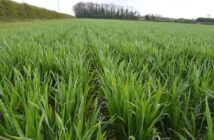The second provisional results of AHDB Cereals & Oilseeds’ Cereal Quality Survey show that the average Hagberg Falling Number for GB wheat is still above the benchmark 250s level, although slightly lower than the initial provisional results.
Above average rainfall from mid-August had led to concerns that the Hagberg may fall considerably. However, the latest results have shown that the decline in the average Hagberg Falling Number, from 312s in September to 293s, has been no greater than usual. Nevertheless, the average Hagberg is now below the previous three-year average (excluding 2012 as the adverse weather conditions that year skew the average).
The second provisional results are based on 50,896 wheat samples analysed up to 30 September.
The average GB specific weight and protein content have also declined compared with the first provisional results published in September but remain above 2014’s final results and the previous three year average (excluding 2012).
Anna Lockwood, AHDB Cereals & Oilseeds Analyst, said: “Generally, GB wheat quality has improved compared with last year, despite fears that weather conditions during the second part of harvest could have reduced quality. We have seen a fall in Hagbergs compared with initial results in September, but this is no greater than declines seen in previous years as a higher number of Group 3 and 4 samples are now included. Overall, the proportion of samples meeting high quality milling wheat specification is more than two and a half times greater compared with last year. However, there is still potential for things to change as more samples are analysed.”
For barley, the latest data based on 28,338 samples shows that although the average specific weight, at 66.5kg/hl, is lower than first set of 2015 results released in September, it is still higher than last year’s final result. Screening results have improved compared with the results published in September, with the proportion of grain retained by a 2.5mm sieve now matching the previous three year average (excluding 2012) of 95.4%. The average nitrogen content for GB barley, at 1.53%, now matches the final average for 2014, although there are regional differences.
Miss Lockwood added: “There’s a better representation of Scottish barley results, with 33% of the sample originating from Scotland. In terms of the average nitrogen content for spring barley, there is a regional contrast: the average Scottish spring barley nitrogen content is lower compared with last year, whereas the English spring barley average is higher. This will be due to the dry weather in Southern England earlier in the summer. Although these results provide a better picture of Scottish barley quality they do not reflect the issue there has been with skinning of barley grain which will be challenging for maltsters and distillers.”
The final results of the Cereal Quality Survey will be published in early November.



